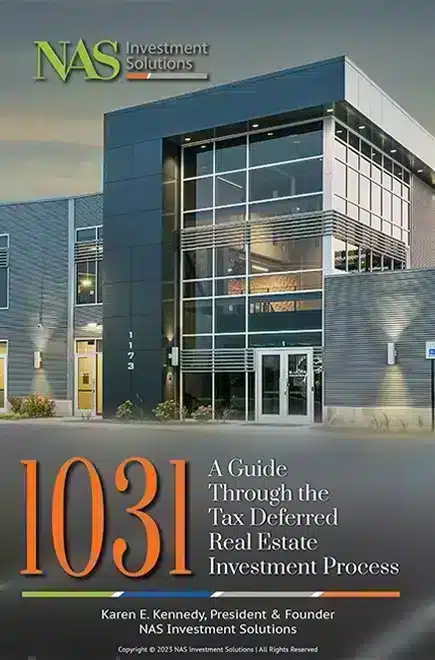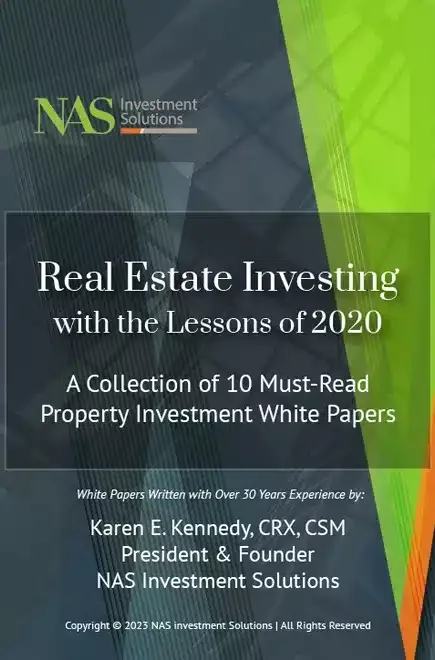Today, a growing number of investors are discovering the advantages of investing in commercial real estate versus the stock market. There are some unique advantages to owning investment real estate that stocks and bonds don’t offer, including yield performance that is independent of Wall Street uncertainty. Commercial real estate also offers an excellent way to diversify a traditional investment portfolio.
While stocks appreciate over time and pay dividends, they don’t come close to providing the same combination of income, financing, and tax benefits that investing in commercial real estate does.
Many investors add real estate to their investment portfolio because of five unique advantages that the property asset class offers: appreciation, cash flow, depreciation, leverage, and tax benefits. The three main ways that investors use real estate to make money are through the rise in property value over time, the monthly rental income generated from tenants, and creating incremental revenue streams.
Five Key Benefits of Owning Commercial Real Estate vs. Stocks
There are five key advantages to investing in commercial real estate:
- Appreciation – with the value of the real property increasing over time
- Cash flow – income-producing real estate can generate consistent monthly income for the real estate investor
- Depreciation – non-cash deductions for real estate depreciation are used to reduce the amount of annual taxable income
- Leverage – real estate investors use leverage to maximize the amount of real estate purchased with the amount of capital available
- Tax benefits – when the time comes to sell, real estate investors can use IRS 1031 like-kind tax-deferred exchanges and opportunity zone investments to legally delay the payment of capital gains tax
NAS Investment Solutions’ featured STNL investment property checks all the boxes of a fundamentally sound real estate investment. STNL property investments tend to be a more stable bond-like investment that delivers dependable, monthly cash flow. Learn More.
Three Main Commercial Real Estate Investment Strategies
There are three main strategies for investing in commercial real estate that lie along different points of the risk-and-reward spectrum:
- Core is turn-key real estate with high-quality, seasoned tenants in a property that is well maintained and offers the latest features and amenities. It offers real estate investors a lower rate of return in exchange for reduced risk.
- Value-add real estate strategy offers investors an opportunity to increase the cash flow and value of a property through updating or creating new revenue streams. This strategy lies in the middle of the risk and reward spectrum.
- Opportunistic strategy is used by real estate investors who accept a higher level of risk in exchange for an anticipated higher reward. Examples include converting an old warehouse into live-work loft spaces or developing a shopping center from the ground up.
Similar strategies can also be used when investing in stocks. For example, owning shares in a blue-chip stock can be considered a core investment strategy, while buying shares of an IPO might be thought of as opportunistic.
Different Types of Investment Real Estate
Real estate is divided into four main categories or asset classes:
- Residential income-producing real estate such as single-family rental homes, small multifamily property, and larger apartment buildings
- Commercial real estate such as office buildings, retail shopping centers, and industrial warehouse and distribution properties
- Land held for future development, subdivided lots ready to build on, and farm land
- Special use real estate like student housing, senior living and retirement facilities, and vacation rental property
Individual stocks and mutual funds also offer a variety of asset class choices to invest in as well. However, because fund managers often regularly change what is held in the fund it can be difficult for investors to know exactly what underlying assets the fund owns shares in at any given time.
Creative Ways to Invest in Commercial Real Estate
Investing in commercial property requires much more capital than purchasing shares of. Banks require more money down – usually 30% or more – and expect borrowers to have prior experience with the type of commercial property they are buying.
There are three creative ways to invest in commercial real estate without directly owning the property:
REITs
Real estate investment trusts (REITs), real estate mutual funds, and real estate ETFs – or exchange-traded funds – let investors buy shares of publicly-traded real estate funds. In fact, according to the National Association of Real Estate Investment Trusts, about 80 million already own REITs as part of their retirement funds.
Crowdfunding platforms
Online real estate crowdfunding investment platforms let investors buy investment shares of high-quality, professionally managed commercial real estate such as office buildings, shopping centers, and large apartment projects.
Real estate partnerships
Real estate partnerships or joint ventures (JVs) are another common way to invest in real estate. Partnerships and real estate JVs are governed by operating agreements and can be structured almost any way the partners like.
Important Things to Understand About Commercial Real Estate Investing
The four main real estate asset classes are residential, commercial, land, and special-use properties. Real estate investors can hands-on and actively manage their property or be passive investors. There are three main real estate investment strategies: Core, value-add, and opportunistic. Each strategy offers a different combination of risk and reward to the real estate investor.
There are an almost countless number of ways to invest in commercial real estate – depending on an individual investor’s investment style and comfort level.








